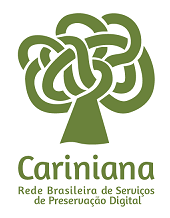Art & politics: urban tessitures
DOI:
https://doi.org/10.5433/1519-5392.2014v14n2p26Keywords:
Politics, Activist art, Artistic collectivesAbstract
In this paper, we discuss some of the intersections between art and politics, focusing especially directed to the aesthetic movement called activist art whose languages used in the construction of their propositions dialogue with the urban space. We then created connections between certain concepts and theories of activist art, theoretically supported by authors like Mesquita (2011), Chaia (2007) and Felshin (1995). We relate the notion of city as thought by Ramos (2009) and Mongin (2009) to some artistic actions developed contemporaneously by artistic collectives that operate in public places, even though they do not call themselves artists activists. We observed that the artistic approach closer to people and the urban, the artistic languages used with symbolic appropriation and misuse of communication tools, mediate public participation in artistic activities. The questioning of the cultural representations and the preoccupation with the new settings and the remaining power of artistic outline a new attitude and a new answer to perception and understanding of their propositions.
Downloads
References
CANONGIA, Ligia. O legado dos anos 60 e 70. Rio de Janeiro: Jorge Zahar Ed., 2005.
CHAIA, Miguel (org.). Arte e política. Rio de Janeiro: Azougue Editorial, 2007.
FELSHIN, Nina. But Is It Art? The Spirit of Art as Activism. Seattle: Bay Press, 1995.
FREIRE, Cristina. Arte e ativismo: mapeando outros territórios (Prefácio). In: MESQUITA, André. Insurgências poéticas: arte ativista e ação coletiva. São Paulo: Annablume; Fapesp, 2011. p. 12.
FRENTE 3 DE FEVEREIRO. Zumbi somos nós: cartografia do racismo para o jovem urbano. São Paulo: Programa de Valorização de Iniciativas Culturais, 2006.
HALL, Stuart. The meaning of New Times. In: MARLEY, D. et al. (Org.). Critical dialogues in Cultural Studies. London, New York: Routledge, 2001, p. 223-237.
HARDT, Michael, NEGRI, Antonio. Multidão: guerra e democracia na era do Império. Rio de Janeiro: Record, 2005.
HESS, Elizabeth. Guerrilla Girl Power: Why the Art World Needs a Conscience. In: FELSHIN, Nina. But Is It Art? The Spirit of Art as Activism. Seattle: Bay Press, 1995, p. 309-332.
LIPPARD, Lucy. Trojan Horses: Activist Art and Power. In: WALLIS, Brian (ed.). Art After Modernism: Rethinking Representation. Boston: New Museum of Contemporary Art, 1984.
MCLUHAN, Marshall. Os meios de comunicação como extensões do homem. São Paulo: Cultrix, 1979.
MEYER, Richard. This Is To Enrage You: Gran Fury and the Graphics of AIDS Activism. In: FELSHIN, Nina. But Is It Art? The Spirit of Art as Activism. Seattle: Bay Press, 1995, p. 51-84.
MOITA LOPES, Luiz Paulo. Inglês e globalização em uma epistemologia de fronteira: ideologia linguística para tempos híbridos. In: DELTA. São Paulo: vol. 24, n. 2, 2008. Disponível em: http://www.scielo.br/pdf/delta/v24n2/v24n2a06.pdf. Acesso em: 10 jul. 2012.
MONGIN, Olivier. A condição urbana: a cidade na era da globalização. São Paulo: Estação Liberdade, 2009.
MESQUITA, André. Insurgências poéticas: arte ativista e ação coletiva. São Paulo: Annablume; Fapesp, 2011.
PALLAMIN, Vera. Do lugar-comum ao espaço incisivo: dobras do gesto estético no espaço urbano. In: MEDEIROS, Maria Beatriz de; MONTEIRO, Marianna F. M. (Org.). Espaço e Performance. Brasília: Universidade de Brasília, 2007, p. 181-193.
PINCUS, Robert. The Invisible Town Square: Artists’ Collaborations and Media Dramas in America’s Biggest Border Town. In: FELSHIN, Nina. But Is It Art? The Spirit of Art as Activism. Seattle: Bay Press, 1995, p. 31-50.
RAMOS, Célia Maria Antonacci. Poéticas do urbano e os “Novos Tempos”. In: MAKOWIECKY, S. et al. (Org.). Linhas cruzadas: artes visuais em debate. Florianópolis: Ed. da UDESC, 2009, p. 77-91.
ROCHA, João César Castro. Dialética da Marginalidade: caracterização da cultura brasileira contemporânea. Folha de São Paulo. São Paulo, 29 fev. 2004. Folha Mais!, p. 5-8. Disponível em: http://acervo.folha.com.br/fsp/2004/02/29/72. Acesso em: 15 dez. 2012.
SALUM, Maria Helena Leuba. Cem anos de arte afro-brasileira. In: AGUILAR, Nelson (Org.). Mostra do redescobrimento: arte afro-brasileira. São Paulo: Associação Brasil 500 Anos Artes Visuais, 2000.
SANTOS, Milton. Por uma outra globalização. Rio de Janeiro: Record, 2000.
SEGURADO, Rosemary. Por uma estética da reexistência na relação entre arte e política. In: CHAIA, Miguel (org.). Arte e política. Rio de Janeiro: Azougue Editorial, 2007, p. 41-58.
WALLIS, Brian (org.). Democracy: a project by Group Material. Seattle: Bay Press; Nova Iorque: Dia Art Foundation, 1990.
WOOD, Paul, FRASCINA, Francis, HARRIS, Jonathan e HARRISON, Charles. Modernismo em Disputa: a arte desde os anos quarenta. São Paulo: Cosac Naify, 2005.
Downloads
Published
How to Cite
Issue
Section
License
Entretextos adota a Licença Creative Commons Attribution 4.0 International, portanto, os direitos autorais relativos aos artigos publicados são do(s) autor (es).
Sob essa licença é possível: Compartilhar - copiar e redistribuir o material em qualquer suporte ou formato. Adaptar - remixar, transformar, e criar a partir do material, atribuindo o devido crédito e prover um link para a licença e indicar se mudanças foram feitas.




















